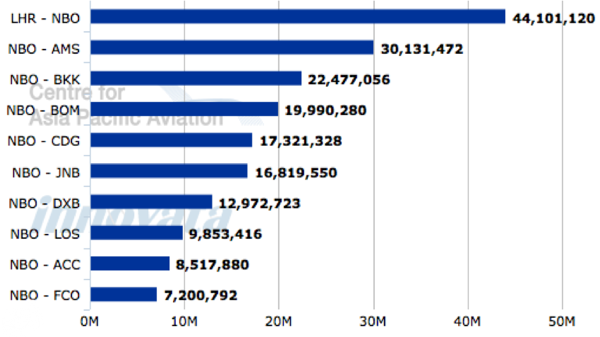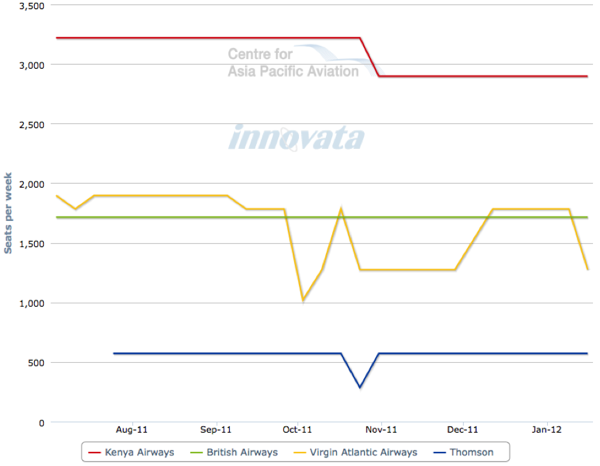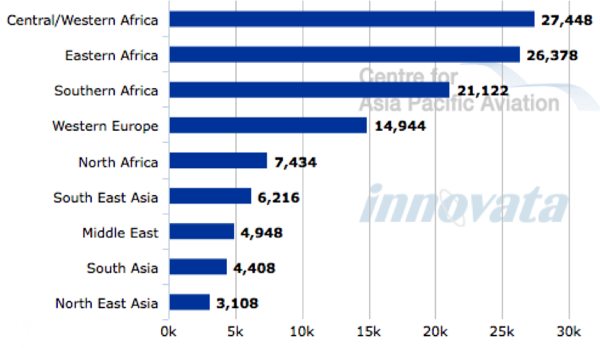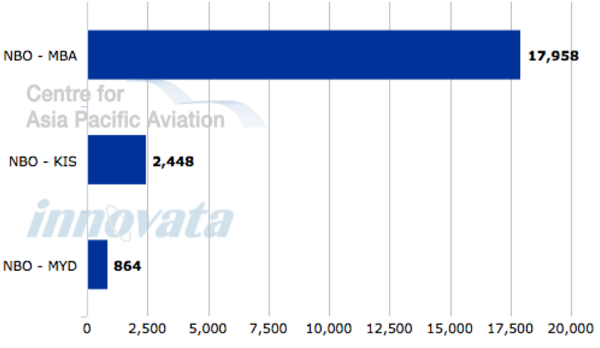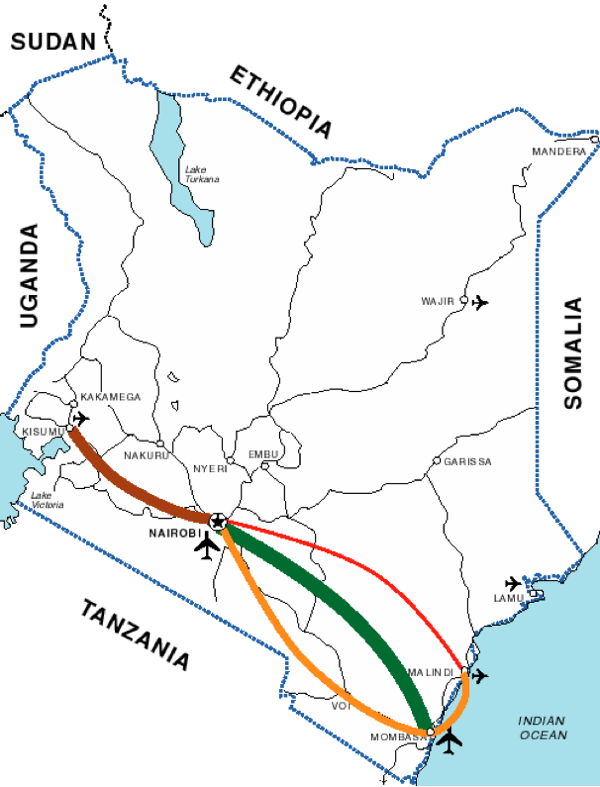The much-awaited Kisumu International Airport will be officially commissioned in a month’s time, as engineers wind-up construction works.
Airport manager Joseph Okumu told The Standard that works at the new site was now 98 per cent complete.
"What we are doing now is test runs to ensure that all is ready as we look forward to opening up the facility to the public," explained Okumu.
Some of the works that are yet to be completed include ground lightening, visual aids and markings at the runway.
Okumu said the new terminal building will be able to handle 600 to 700 persons per hour, translating to two million traffic per annum.
This will surpass the current traffic of 300,000 and will see it accommodate big planes such as Boeing 767 and the 737 planes.
It was also allow Airbus 310, which can carry up to 250 passengers to land in the lakeside town.
At the weekend, former Nigerian president Oleisugun Obasanjo tested the facility when he flew direct from Abuja to Kisumu International Airport.
The former head of state was leading a powerful delegation from Nigeria on a two-day familiarisation tour of the Sh2 billion mechanised rice-farming ventures by the American-based Dominion group of companies.
"This was part of the test runs that we allowed to see how effective we are as we map the Kisumu international route," explained Okumu.
The new airport is likely to build the Nyanza economy coming as the region recovers from the rigors of post-poll violence and the subsequent global economic crunch. Already, a number of investors are eyeing the town and are rushing to set up business in order to tap the export market.
Dismantle arrangementA team of Norwegian investors has unveiled plans to put up a S4.1 million Tilapia fish-farming project and processing plant, which will be based in Nyando constituency. The group hopes to produce enough fish for export to the Europe, Asia, and pacific and Caribbean countries with the anticipated opening of Kisumu international Airport.
Another Sh837 million project that will see to the harvesting and re-use of hyacinth is expected to generate up to Sh7.6 billion a year. The project will be undertaken jointly by Kenya, US and Canada under the banner of Hyaquip.
The developments are part of effort that the area leaders have been making to woo investors back to the town, which suffered tremendous economic backlash following the 2007/08 post-election violence.
Kisumu airport expansion project, estimated to be worth Sh3 billion, begun on October 29, 2009 and was supposed to be complete in August this year. But Nyanza leaders, led by Prime Minister RailaOdinga asked for more funds to extend the runway, which delayed completion date.
Once opened, Kisumu International Airport will be among the top eight busiest regional airports in East Africa.
It will be elevated to international airport status, thereby joining the league of Jomo Kenyatta International Airport and Moi International Airport, Mombasa.
The airport is expected to create more than 30,000 jobs, fuel business growth and stir up East African economies by boosting bilateral trade.
Post Credit: The Standard Online Edition
Airport manager Joseph Okumu told The Standard that works at the new site was now 98 per cent complete.
"What we are doing now is test runs to ensure that all is ready as we look forward to opening up the facility to the public," explained Okumu.
Some of the works that are yet to be completed include ground lightening, visual aids and markings at the runway.
Okumu said the new terminal building will be able to handle 600 to 700 persons per hour, translating to two million traffic per annum.
This will surpass the current traffic of 300,000 and will see it accommodate big planes such as Boeing 767 and the 737 planes.
It was also allow Airbus 310, which can carry up to 250 passengers to land in the lakeside town.
At the weekend, former Nigerian president Oleisugun Obasanjo tested the facility when he flew direct from Abuja to Kisumu International Airport.
The former head of state was leading a powerful delegation from Nigeria on a two-day familiarisation tour of the Sh2 billion mechanised rice-farming ventures by the American-based Dominion group of companies.
"This was part of the test runs that we allowed to see how effective we are as we map the Kisumu international route," explained Okumu.
The new airport is likely to build the Nyanza economy coming as the region recovers from the rigors of post-poll violence and the subsequent global economic crunch. Already, a number of investors are eyeing the town and are rushing to set up business in order to tap the export market.
Dismantle arrangementA team of Norwegian investors has unveiled plans to put up a S4.1 million Tilapia fish-farming project and processing plant, which will be based in Nyando constituency. The group hopes to produce enough fish for export to the Europe, Asia, and pacific and Caribbean countries with the anticipated opening of Kisumu international Airport.
Another Sh837 million project that will see to the harvesting and re-use of hyacinth is expected to generate up to Sh7.6 billion a year. The project will be undertaken jointly by Kenya, US and Canada under the banner of Hyaquip.
The developments are part of effort that the area leaders have been making to woo investors back to the town, which suffered tremendous economic backlash following the 2007/08 post-election violence.
Kisumu airport expansion project, estimated to be worth Sh3 billion, begun on October 29, 2009 and was supposed to be complete in August this year. But Nyanza leaders, led by Prime Minister Raila
Once opened, Kisumu International Airport will be among the top eight busiest regional airports in East Africa.
It will be elevated to international airport status, thereby joining the league of Jomo Kenyatta International Airport and Moi International Airport, Mombasa.
The airport is expected to create more than 30,000 jobs, fuel business growth and stir up East African economies by boosting bilateral trade.
Post Credit: The Standard Online Edition








































